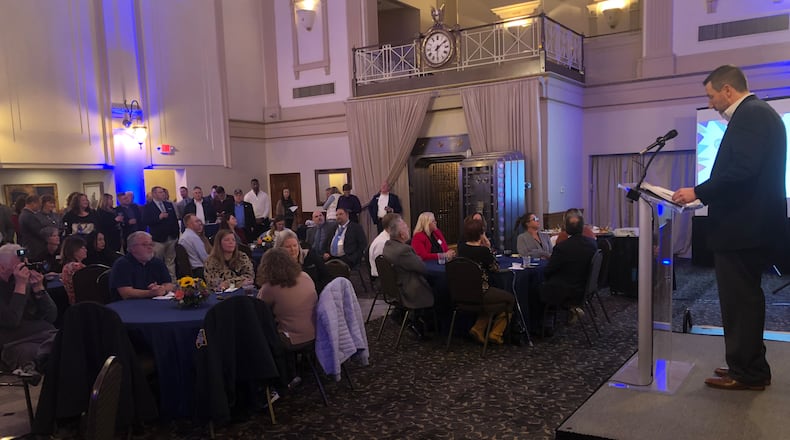Rick Pearce, president and CEO of the chamber, talked about the Skills2Careers program Thursday night during the chamber’s annual meeting at the Windamere Event Venue.
The chamber has been working on the program for nearly three years, said Pearce, celebrating his 10th year with the organization.
The database allows job seekers an opportunity to enter their acquired skill sets and be matched with employers who are looking for the same skills. Once the employer locates a potential employee they can start recruiting those individuals, Pearce said.
The goal, he said, is for individuals, employees and educators to all speak the same language of skill sets.
“Everybody has skills,” Pearce told the Journal-News after the meeting. “Employees need skills. Educators teach skills. Let’s make skills the common language.”
For the past 50 years, employers have posted open positions based on job titles and job seekers were confused about all the various job titles that employers used due to their “unique cultures,” according to Pearce.
When job seekers locate a company that requires certain skills then they can obtain those skills and make themselves more marketable, he said.
“It makes a better match,” he said.
The four school districts in the chamber’s service area — Middletown, Monroe, Madison and Edgewood —produce about 900 graduates a year, according to Pearce. He said those who immediately enter the workforce after graduation, or those who go to college, all need jobs. So it’s important to match those students with local employers.
“We got to figure out how to keep them here,” he said. “It’s all about developing the next generation of workforce.”
About the Author

